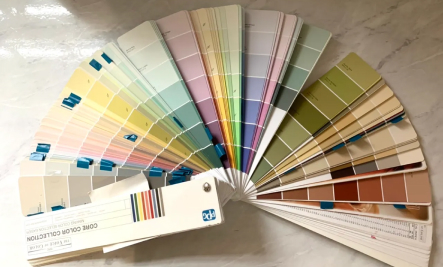Introduction
Selecting the right paint color can dramatically impact the look and feel of your home. With a variety of options available, it’s essential to choose colors that enhance your space and align with your personal style. Here’s a guide to help you make the best choices for your painting projects.
How to Determine the Perfect Paint Color for Different Rooms
When choosing paint colors for different rooms, consider the room’s purpose and natural light. For living rooms and bedrooms, opt for colors that create a calming atmosphere, such as soft blues or neutrals. In contrast, vibrant hues like yellows or greens can energize spaces like kitchens or playrooms. Assess the room’s lighting—colors may look different in natural versus artificial light. Sample paint swatches on your walls to see how they interact with the room’s light throughout the day. This approach ensures that the final color choice complements the room’s function and overall ambiance.
Understanding Color Psychology: How Paint Colors Affect Mood and Atmosphere
Color psychology plays a crucial role in how paint colors affect mood and atmosphere. For example, blues and greens are known for their calming and soothing effects, making them ideal for bedrooms and bathrooms. Warm colors like reds and oranges can energize and stimulate, suitable for spaces where activity is high, such as home offices or gyms. Neutral tones provide a versatile backdrop that can adapt to various moods and styles. By understanding how different colors influence emotions and behavior, you can select hues that enhance the desired atmosphere in each room of your home.
Tips for Coordinating Paint Colors with Your Home’s Existing Decor
Coordinating paint colors with your existing decor involves blending hues that complement your current furnishings and architectural elements. Start by identifying the dominant colors in your decor, such as upholstery and flooring, and choose paint colors that harmonize with these tones. Use color wheels or palettes to find complementary or analogous shades that work well together. Test paint samples against your existing decor to see how they interact. Consider using accent walls or subtle contrasts to create depth without overwhelming the space. Proper coordination ensures a cohesive look that ties together your home’s design elements.
Choosing Paint Finishes: What You Need to Know for a Professional Look
Selecting the right paint finish is crucial for achieving a professional look. Matte finishes provide a smooth, non-reflective surface, ideal for hiding imperfections and creating a subtle look in low-traffic areas. Satin finishes offer a soft sheen, making them suitable for walls in high-traffic areas like hallways and living rooms. Semi-gloss and gloss finishes are more durable and reflect light, making them perfect for trim, doors, and cabinets. Each finish has its own characteristics and practical benefits, so consider the room’s usage and desired aesthetic when choosing the finish. Properly selecting and applying finishes ensures a polished and lasting result.
Conclusion
Choosing the right paint color and finish involves more than just picking a favorite shade. By considering room functions, color psychology, existing decor, and paint finishes, you can make informed decisions that enhance the beauty and functionality of your space. These steps will help you achieve a well-coordinated and professional look throughout your home.

